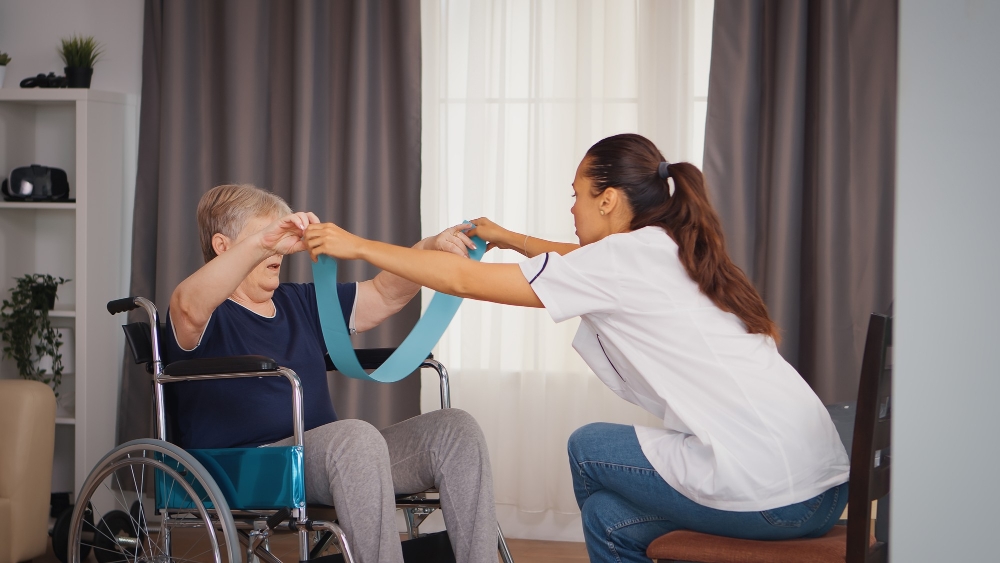Vestibular Rehabilitation Therapy to Regain Your Balance
Have you ever been diagnosed with vertigo or dizziness?
Vertigo is not a diagnosis but a symptom experienced by many people. These symptoms come from a dysfunction in one of the body’s systems, a common cause being the peripheral (inner ear) and central (brain) vestibular systems.
Common vestibular conditions include Benign Paroxysmal Positional Vertigo (BPPV), Vestibular Neuritis and Labyrinthitis, Vestibular Hypofunction/Vestibulopathy, Meniere’s Disease, Vestibular Migraine, Persistent Postural-Perceptual Dizziness (PPPD) and Cervicogenic Dizziness.
1. Benign Paroxysmal Positional Vertigo (BPPV)
BPPV is a condition where otoconia (or “crystals”) fall into one of the canals in the inner ear. When this occurs, people often experience intense episodes of vertigo for a short amount of time after a change in head position. BPPV is common in older individuals and those suffering from head trauma. While a vast majority of cases occur for no apparent reason, there are some risk factors that put people at a higher risk of this condition including osteoporosis and vitamin D deficiency. Depending on the canal and which ear is involved, different Canalith Repositioning Techniques may be required including the Epley maneuver.
2. Vestibular Neuritis and Labyrinthitis
Vestibular Neuritis and Labyrinthitis are conditions that involve inflammation of either the vestibular nerve or the vestibular system (inner ear) itself. Typically this inflammation is caused by a virus or bacterial infection. When this occurs, people often experience intense vertigo and nausea over the course of a few days, followed by a period of imbalance and dizziness due to a resulting Vestibular Hypofunction that may require Vestibular Balance and Rehabilitation Training to assist full recovery.
3. Meniere’s Disease
Meniere’s Disease is a condition brought on by endolymphatic hydrops, which is believed to be an accumulation of excess fluid in the vestibular system. Due to increased pressure in the inner ear, both physical and chemical damage occurs to the vestibular system over time. People often experience vertigo lasting hours/days alongside tinnitus (ringing in ears) and aural fullness (blocked feeling in ears), with eventual hearing loss and imbalance over time. Sadly there is no cure for Meniere’s disease. However, with lifestyle modifications, stress management, and Vestibular Balance and Rehabilitation Training, you can help manage your flare ups and symptoms.
4. Vestibular Migraine
Vestibular Migraine is a class of migraine where people experience dizziness and imbalance with or without a headache. Vestibular migraines can cause a variety of other symptoms though, and presents very differently from one person to the next. Management of this condition typically involves lifestyle modifications, stress management, and Vestibular Balance and Rehabilitation Training to help manage flare ups.
It is crucial to have healthcare practitioner with vestibular training assess and manage your condition if you experience any of the following common vestibular symptoms:
Up to 30-35% of the population will experience dizziness and vertigo symptoms in their lifetime, it’s much more common than most people think! Vestibular Rehabilitation can help you take control over your vertigo and dizziness, as many vestibular conditions are treatable and respond well to therapy.
Using the latest in Infrared Video technology, our practitioners can provide a thorough assessment to help identify the possible cause of your symptoms. A detailed assessment is critical in the identification of underlying concerns, but once identified a personalized Vestibular Rehabilitation program can be built towards your needs.
Vestibular Rehabilitation can include a variety of treatment methods and rehabilitation programs depending on the underlying cause of your symptoms.
Once the underlying cause is identified, our personalized treatment plans may include:
Come in and see our vestibular-trained healthcare practitioners for a personalized assessment and treatment plan.
